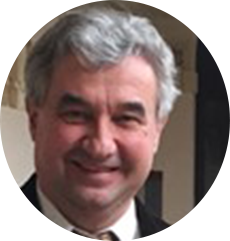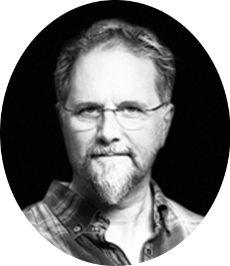Keynote: 50 YEARS OF MODELING AND SIMULATION OF SPACE TETHER DYNAMICS

Prof. Arun K. Misra
McGill University, Canada
Abstract: Modeling and simulation of space tether dynamics started in the early 1970s when it was realized that tethers have a vast potential for many space applications. The decision to launch the Tethered Satellite System – 1 (TSS – 1) mission gave a significant boost to tether dynamics studies. Since then, hundreds of such investigations have been undertaken; many of them are related to deorbiting of satellites using electrodynamic tethers or to space debris removal. Many different approaches have been used to discretize the tether for the analysis of its elastic oscillations. Various approaches have been proposed to stabilize the librational motion of the tether. This lecture will briefly review the different approaches that have been used for modeling and simulation of space tether dynamics.
Biography: Arun K. Misra is currently the Thomas Workman Professor Emeritus in the Department of Mechanical Engineering at McGill University in Montreal, Canada. His research interests are in the areas of spacecraft dynamics and control, tethered satellites, space elevator, space debris and space robotics. He is a Fellow of the American Institute of Aeronautics and Astronautics (AIAA) as well as of the American Astronautical Society (AAS). He has been elected to the International Academy of Astronautics and to the Canadian Academy of Engineering. He is a Co-Editor of the international journal Acta Astronautica. He has received several awards such as the Dirk Brouwer Award of the American Astronautical Society and the Distinguished Service Award of the International Astronautical Federation.
Keynote: THE EVOLUTION OF SPACE TETHERS TECHNOLOGY

Prof. Enrico Lorenzini
University of Padova (Italy)
Abstract: Space tethers have been around for about 4 decades and even longer if we consider the earlier very ambitious proposal of a terrestrial Space Elevator. Tether technology has been tested in space several times with successes and in some cases mixed results. Nevertheless, technology has been evolving steadily leading to systems that are shorter, more efficient and more survival in space. This presentation will cover the evolution of tethers-in-space technology focusing primarily on the main advancements of electrodynamic tethers. This technology is fundamentally green and consequently fits very well with the new trend in space propulsion. The level of thrust that can be attained with electrodynamic tethers is much higher than that obtainable with other propellant-less alternatives (e.g. neutral drag sails). Moreover, electrodynamic tethers can work reversibly by either transforming orbital energy into electrical and mechanical energy (producing drag in this case) and vice versa to produce thrust. This reversibility leads to a broad range of applications in low Earth orbits and at some magnetosphere-bearing planets.
Biography: Enrico Lorenzini is a Professor in the Department of Industrial Engineering of the University of Padova (Italy) since 2006 after having spent 21 years as staff scientist at the Harvard-Smithsonian Center for Astrophysics in Cambridge, Massachusetts (USA). His research interests include Astrodynamics, Spacecraft Dynamics and Control; Conceptual design of space systems with a focus on Tethered Satellites, having participated in five orbital missions. He is an AIAA Associate Fellow, an IEEE Member, an AIDAA (Italian Association of Aeronautics and Astronautics) Member, an Academic Editor of the International Journal of Aerospace Engineering. The publication record shows 182 documents listed in SCOPUS inclusive of a front-cover article in Scientific American (“Fly by Wire”, August 2004 issue) on electrodynamic tethered satellites translated in many languages. He was among the top 2% most-cited scientists in the world according to to the Stanford University analysis of standardized citation indicators of 2021 and 2023.
Keynote: Tethers Unlimited: A WILD RIDE THROUGH THE TRL VALLEY OF DEATH

Dr. Robert P. Hoyt
Dark Yonder LLC,
Winthrop, WA, USA
Abstract: Back in the waning years of the 1900’s, an eager but inexperienced PhD student teamed up with the well-known physicist and science fiction author Dr. Robert L Forward to found Tethers Unlimited, Inc in order to pursue the commercial development of space tether technologies. That foolish young student, Dr. Rob Hoyt, would end up running the company for over 25 years, growing it to a 100+ person, >$10M/year R&D operation until selling the company to a Private Equity backed venture in 2020. In the process, he learned many lessons about building companies and commercializing space technologies, all of them learned the hard way. Dr. Hoyt will review the history of Tethers Unlimited, its technologies and missions, and discuss challenges and lessons-learned in taking a space company from startup to exit.
Biography: Dr. Robert P. Hoyt is the President of Dark Yonder LLC in Winthrop, WA, USA. He received his Ph.D. & M.S. degrees in Aeronautics/Astronautics from the University of Washington in 1994/92 and B.A. degree in Physics from Williams College in 1990.
Dr. Rob Hoyt is a seasoned entrepreneur, physicist, and investor with expertise in advanced space technologies, additive manufacturing, plasma physics, and scientific algorithms. Dr. Hoyt has created two technology companies, built them through entirely organic growth, and achieved successful exits through acquisitions. He has extensive experience with SBIR technology development, leading over 200 successful proposal efforts with multiple transitions of innovative technologies to commercial products. He has also won more contracts from NASA’s Innovative Advanced Concepts (NIAC) Program than any other innovator, and has successfully transitioned two market-catalyzing NIAC technologies to flight demonstration programs.
Dr. Hoyt co-founded Tethers Unlimited Inc. (TUI) in 1994, and served as President & CEO for 25 years. Over that time he built the company into a $20M/yr space technology firm providing high-performance satellite components as well as innovations in In-space Servicing, Assembly, and Manufacturing (ISAM) and Sustainable Space solutions. In 2020 he sold TUI to ARKA Group LP, a private-equity backed space and defense company.
Dr. Hoyt also co-founded ScienceOps, a scientific algorithm and big-data services company. Sciences was purchased by Acquisio in 2012.
Over his decades of service in these companies, Dr. Hoyt has developed extensive experience in financial management of startup and growth companies, commercialization of SBIR technologies, industrial security, branding, marketing, and M&A.